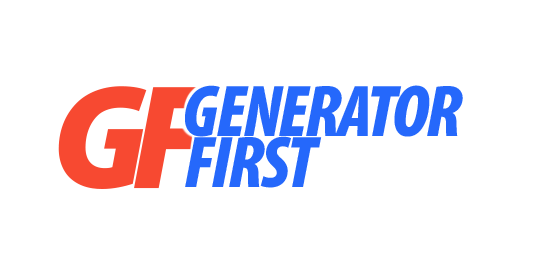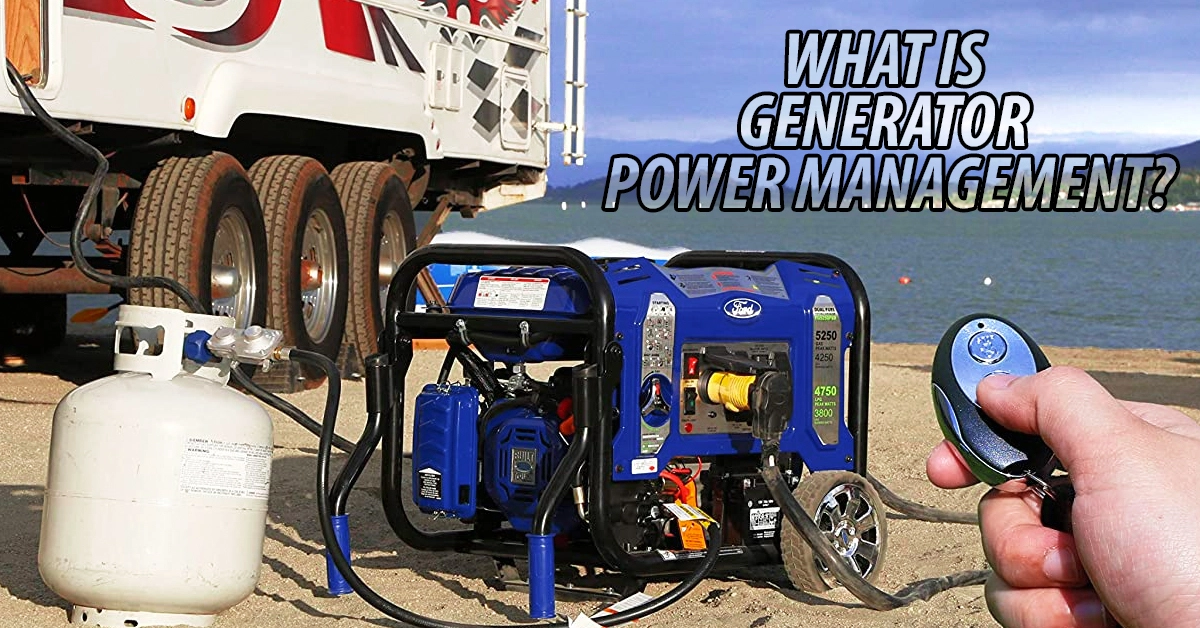What Is Generator Power Management System?
Generator power management refers to managing and optimizing the power generated by generators to ensure a reliable and consistent power supply. With the increasing demand for continuous power supply, especially in critical sectors such as healthcare, manufacturing, and data centres, the generator power management has become essential.
Effective generator power management ensures uninterrupted power supply in power outages or emergencies. Additionally, it can lengthen the life of equipment, lower energy expenses, and have minimal negative environmental effects.
This outline aims to provide an overview of generator power management, including its components such as the Automatic Transfer Switch (ATS), Generator Controller, and Load Bank. It also discusses the factors to consider when managing generator power, such as power requirements, fuel availability, maintenance requirements, and environmental factors. Additionally, it explores various generator power management techniques like Peak Shaving, Load Shedding, Demand Response, and Fuel Optimization, and best practices for successful generator power management.
Furthermore, this outline addresses the challenges of generator power management, such as cost, the complexity of system integration, and regulatory compliance. It also provides case studies demonstrating successful generator power management in various sectors. Finally, it examines the future of generator power management, including advancements in technology, integration with renewable energy, and global trends in energy management.
Components Of Generator Power Management
Generator power management involves several key components that optimize power generation and distribution. These components include:
Automatic Transfer Switch (ATS)
The ATS is a critical component that transfers power between the generator and the main power source. It automatically detects when the main power source fails and switches the load to the generator to ensure an uninterrupted power supply. The ATS instantly shifts the load back to the main power source once the main power source has been restored.
Generator Controller
The generator controller manages the generator’s output, monitors its performance, and controls its operation. It monitors several variables, including temperature, power, current, and frequency. It provides feedback to the generator to ensure optimal performance. The generator controller can also communicate with the ATS to coordinate power transfer and ensure a smooth transition between the generator and the main power source.
Load Bank
A load bank is an external device that simulates a load on the generator to test its performance and capacity. Load banks are commonly used during the commissioning and maintenance of the generator to ensure that it is functioning correctly and efficiently. They can also be used to test the generator’s response to varying loads and diagnose issues with its performance.
Factors To Consider In Generator Power Management
To effectively manage generator power, several factors must be considered. These factors include:
Power Requirements
One of the most important factors to consider is the load’s power requirements that the generator supports. Ensure that the generator is sized appropriately based on the total power demand. In addition, it is essential to consider the type of load, as certain loads, such as motors or compressors, may require more power during startup.
Fuel Availability
Another critical factor is the generator’s fuel availability. A generator must be fueled with the appropriate fuel type and have an adequate supply of fuel to meet its needs. It is also important to consider the fuel consumption rate and to monitor fuel levels regularly to avoid running out of fuel.
Maintenance Requirements
Proper maintenance is essential for the generator to run effectively and dependably. The generator and its components, such as the engine, fuel, and control system, require regular inspections, testing, and servicing. Having a maintenance schedule and ensuring that trained personnel are available to perform maintenance tasks is also essential.
Environmental Factors
Finally, it is important to consider the environmental factors that may affect the operation of the generator, such as temperature, humidity, and altitude. These factors can impact the generator’s performance and efficiency, so it is essential to choose a location for the generator that minimizes the impact of these factors. It is also important to protect the generator from weather and environmental hazards, such as floods or hurricanes.
Generator Power Management Techniques
Several techniques can be used to manage generator power effectively. These techniques include:
Peak Shaving
Peak shaving involves reducing the amount of power drawn from the grid during periods of high demand and using the generator to meet the increased demand instead. Utilities can avoid peak-demand charges by reducing energy costs.
Load Shedding
Load shedding involves selectively reducing or shedding non-essential loads during periods of high demand or when the generator is operating at or near full capacity. This way, critical loads are still supplied with power, and the generator is not overloaded or tripped.
Demand Response
Demand response involves actively managing energy use in response to changes in the electricity market, such as during periods of high demand or when electricity prices are high. This technique can reduce energy costs and minimize the strain on the grid by shifting power consumption to off-peak periods.
Fuel Optimization
Utilizing the generator to reduce fuel usage and increase effectiveness is known as fuel optimization. Load following, which changes the generator’s output to match the load, and automatic start-stop, which switches the generator on and off to meet the load, are examples of such methods. Utilizing fuel as efficiently as possible can lower fuel expenses and lessen the generator’s environmental effects.
Best Practices in Generator Power Management
Some best practices must be followed to guarantee optimal generator power control. These techniques consist of the following:
Regular Maintenance And Testing
Regular maintenance and testing of the generator and its components are critical to ensure optimal performance, reliability, and safety. Maintenance tasks such as oil changes, filter replacements, and inspections of critical components fall under this category. Regular testing, such as load bank testing, ensures the generator operates at peak performance.
Proper Sizing Of Equipment
Proper sizing of the generator and its components is critical to ensure it can meet the power demands of the load it supports. Choosing a generator with the right capability is one step in this process, as is checking the sizing of other elements like the ventilation and fuel systems.
Training of Operators And Maintenance Personnel
Proper training of operators and maintenance personnel is essential to ensure they are familiar with the generator’s operation and maintenance requirements. Training on secure operating methods, troubleshooting tricks and emergency protocols is included.
Monitoring and Data Analysis
Monitoring the generator’s performance and analyzing data can help identify potential issues before they become problems. Monitoring important variables like voltage, current, and frequency, as well as fuel usage and working hours, is part of this. Data analysis can be used to find trends and patterns to improve efficiency and cut expenses.
Challenges In Generator Power Management
While generator power management can provide many benefits, some challenges must be addressed to ensure successful implementation. Some of the difficulties of generator power management include the following:
Cost of Equipment and Maintenance
Purchasing and maintaining a generator can be significant, particularly for large generators. In addition, maintenance costs can be high, particularly if the generator is used frequently or is required to operate in harsh environments.
System Integration
Integrating a generator into an existing power system can be complex, particularly if the generator must work with other components such as inverters or battery systems. Proper integration requires a thorough understanding of the power system and its requirements.
Regulatory Compliance
Generators may be subject to various regulations, including environmental regulations related to emissions and safety regulations related to fuel storage and handling. Complex tracking and reporting are necessary to ensure compliance with these laws, which can be difficult.
Fuel Availability And Quality
Fuel availability and quality can be challenging, particularly in remote areas where fuel delivery may be infrequent or unreliable. In addition, fuel quality can impact the performance and lifespan of the generator.
Case Studies in Generator Power Management
Here are some examples of how generator power management has been implemented in different industries:
Example 1: Hospital Power Management
A hospital is a critical facility that requires reliable backup power during a power outage. In one hospital, a generator power management system was implemented to ensure that critical systems, such as life support equipment and medical imaging machines, would continue to operate in the event of a power outage. The system included an automatic transfer switch (ATS) that would activate the generator within seconds of a power outage and load-shedding capabilities to ensure that the most critical loads would receive power. Regular testing and maintenance of the system were conducted to ensure optimal performance.
Example 2: Data Center Power Management
Data centres require reliable backup power to avoid data loss or downtime during a power outage. In one data centre, a generator power management system was implemented to ensure that critical systems, such as servers and cooling equipment, would continue to operate in the event of a power outage. The system included a generator controller that could automatically start the generator when needed and load-shedding capabilities to prioritize critical loads. Regular monitoring and data analysis were conducted to optimize fuel usage and ensure optimal performance.
Example 3: Emergency Services Power Management
Emergency services, such as police and fire departments, require reliable backup power to ensure critical communications and emergency response systems are available during a power outage. A generator power management system was implemented in one city to provide emergency services that could continue operating during an extended power outage. The system included multiple generators and an automatic transfer switch (ATS) that would activate the generators within seconds of a power outage. Regular maintenance and testing of the system were conducted to ensure optimal performance.
In each example, generator power management was implemented to ensure reliable backup power during a power outage. Proper equipment selection, system integration, and ongoing maintenance were critical to ensuring optimal performance and minimizing downtime.
Future Of Generator Power Management
Advancements in technology, integration with renewable energy, and global trends in energy management shape the future of generator power management. The followings are some patterns and developments we can anticipate in the upcoming years:
Advancements in Technology
We can expect improvements in generator power management systems as technology advances. For example, smart sensors and data analytics can help optimize fuel usage and reduce maintenance costs. Additionally, advances in battery technology may allow for greater use of hybrid generator systems that combine generators with batteries or other forms of energy storage.
Integration With Renewable Energy
With the growing importance of renewable energy sources, we expect greater integration between generators and renewable energy systems such as solar and wind. For example, a hybrid system combining a generator with solar panels or wind turbines can provide backup power while reducing energy costs and carbon emissions.
Global Trends In Energy Management
The need for reliable backup power and the growing importance of energy efficiency are global trends that will shape the future of generator power management. As energy costs continue to rise and environmental concerns become more pressing, we expect to see a greater emphasis on energy management solutions that reduce costs and minimize environmental impact.
Effectively Manage Standby Power
During a blackout, standby power is essential to keep your home up and running. However, it is important to effectively manage this power to ensure that it is being used efficiently and effectively. Here are some tips for effectively managing standby power:
- Importance of managing power during blackouts: When your standby generator is running, it is important to monitor the amount of power being used by your home. This is especially important if your generator is running at or near its maximum capacity. Overloading your generator can cause it to malfunction or shut down, which can lead to further problems during the blackout. By effectively managing your standby power, you can ensure that your generator is being used efficiently and that all of your essential appliances and devices are receiving the power they need.
- Power management for busy households: If you have a busy household, it is important to ensure that your standby power is being used effectively. For example, if your generator is running at or near its maximum capacity because of long-running appliances like a washing machine or dryer, other high-demand appliances like your air conditioner may not have the power they need to start and run. In this case, you may need to help out the transfer switch and generator with some power management of your own. This could include turning off certain appliances or devices to free up power for others.
- Power management for devices with lower power usage: Appliances and devices that use lower amounts of power, such as a washing machine, may not seem like they would have a significant impact on your generator’s power usage. However, these devices can still have an impact on your overall power usage, especially if you have multiple devices running at the same time. To effectively manage standby power, it is important to identify which devices are essential and which are not. This will allow you to prioritize which devices should receive power during a blackout. You may need to turn off certain devices to ensure that others have the power they need to operate effectively.
Portable Generator Power Management
Portable Generator Power Management
During a power outage, portable generators can provide a temporary solution for supplying power to a home. However, to effectively manage power during an outage, it’s important to understand how to connect your generator to a manual transfer switch and how to choose which circuits to supply with power.
Connecting Portable Generators To Manual Transfer Switches
Manual transfer switches are typically used with portable generators to connect specific circuits to the generator. The transfer switch allows you to switch between the power grid and the generator, providing a safe and efficient way to supply power to your home during an outage.
Choosing Circuits To Supply With Power
When connecting your generator to a manual transfer switch, you will need to decide which circuits to supply with power. It’s important to prioritize essential circuits such as the refrigerator, lights, and medical equipment.
Strategies For Managing Power During Outages
Managing power during an outage is crucial for ensuring that essential circuits have power when needed. To effectively manage power, it’s important to develop a strategy for which circuits to power and when.
- One strategy is to limit the use of high-demand appliances to one at a time. For example, if you need to run the air conditioner, turn off other high-demand appliances such as the washing machine or dishwasher until the air conditioner has finished running.
- Another strategy is to prioritize essential circuits over less important ones. Only run the circuits that are necessary, and turn off those that are not needed. This will help to conserve power and ensure that essential circuits have enough power to run.
Prioritizing Essential Circuits And Limiting Less Important Ones
Prioritizing essential circuits is critical during a power outage. To ensure that essential circuits have enough power, it’s important to limit the use of less important circuits. For example, you may need to limit the use of the electric clothes dryer to once every few hours to conserve power for other essential circuits.
In addition to limiting less important circuits, it’s important to regularly monitor the generator’s capacity and adjust power usage accordingly. If the generator is nearing its capacity, turn off non-essential circuits to prevent overloading the generator and ensure that essential circuits continue to have power.
Conclusion
For dependable backup power during a power outage, generator power control is essential. Components such as automatic transfer switches, generator controllers, and load banks play a crucial role in the system’s performance. Proper management techniques such as peak shaving, load shedding, demand response, and fuel optimization can further enhance the system’s efficiency and reliability.







